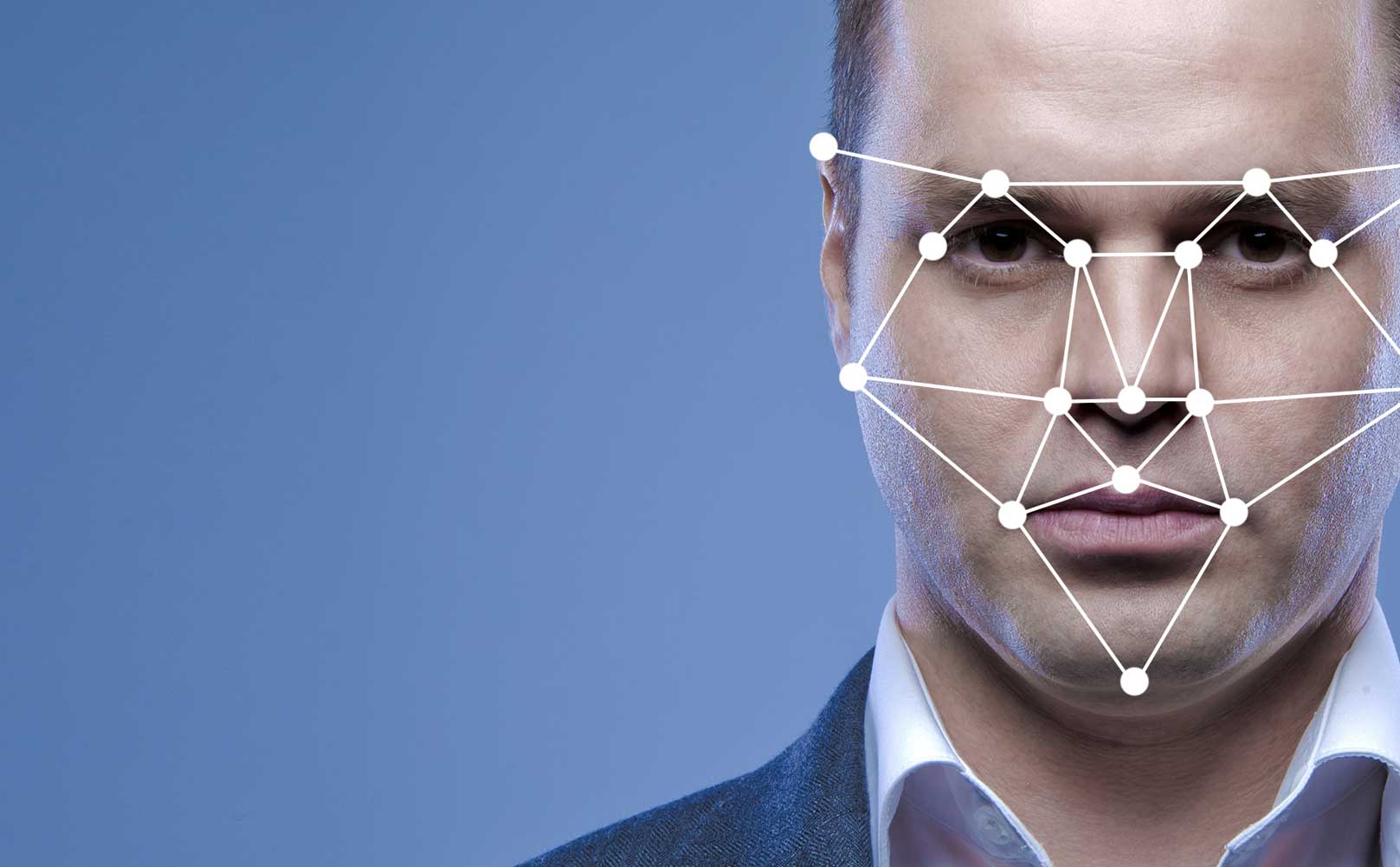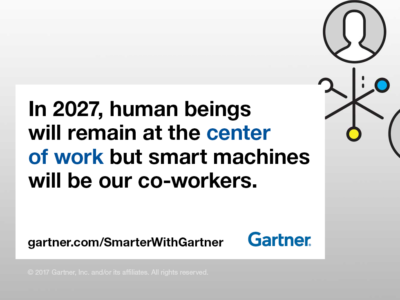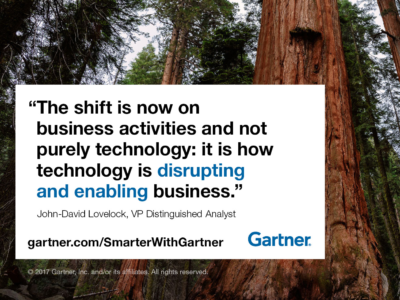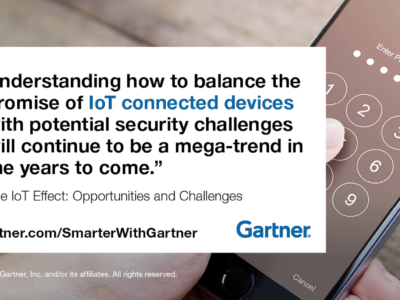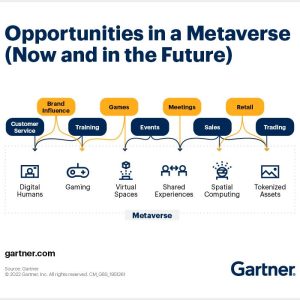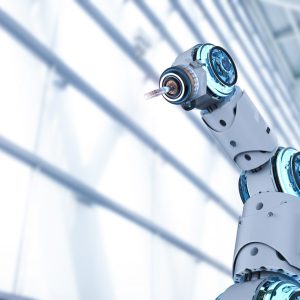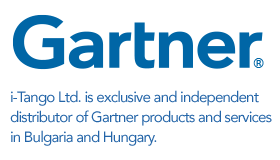Smart agents will reset the working relationship between people and technology.
Contributor: Rob van der Meulen
The working relationship between people and technology is fundamentally shifting. Employees used to learn the language of business applications to use them. A world where Shift F9 created a new line item entry in their expenses.
Since then, advances in user experience design have masked the language of technology with buttons and guided navigation. The user training toll has decreased but it has by no means gone away.
“We need employees to engage with more applications than before, from HR systems to self-service analytics, each with its own user experience and language,” said Tom Austin, vice president and Gartner Fellow.
In the future, smart agents will remove the burden on organizations to train up tech-literate people by enabling people literate-tech. Employees will rely on smart agents they control to interact with their applications for them. They will converse with these smart advisors, or virtual personal assistants, in their natural language via touch, speech, keyboards, written text, gestures and other mechanisms. Meanwhile, people literate-tech will (with their owner’s permission) gain more insights into what their owners want and need through observing what they do.
By 2020, at least 40 percent of people will primarily interact with people-literate technologies, removing much of your organization’s need to invest in computer literacy training. Mr. Austin said that CIOs need to plan on people-literate technologies becoming the dominant model and invest accordingly.
Mr. Austin added that we are witnessing evidence of smart agents driving this transformation and not just with conversation aids like Siri and Cortana. Expert systems like “Ask SGT Star” – a chatbot developed by Next IT for the US Army – already has over 800 rules to determine what to say to users. IPSoft’s Amelia offers virtual customer assistants that learn from observing person-to-person interactions, and IBM’s Watson offers a broad suite of natural-language processing and generation capabilities.
Natural language and intelligent interaction is just the start. Smart agents will become proactive, autonomously making suggestions based on what they learn about the people that use them and what’s in their diary, on their to-do-list, in a business workflow or happening in their personal and professional networks. They will actively learn from responses and, with permission, begin taking actions.
As smart agents proliferate, demand for ‘bring-your-own’ smart agents will follow. However, various factors may slow, or speed up, the arrival of these and new technologies in the workplace.
Early smart agents are reliant on people-curated, rules-based expert systems to understand the meaning of what’s been said, draw inferences and decide on how to respond. These tools are cute, sometimes fun and sometimes useful, but they’re not smart enough.
Over time, CIOs should be developing an enterprise-wide view on the potential for smart things. “You must be sensitive to the fact that people will not automatically trust smart agents, and individual business units may not see their potential,” said Mr. Austin.
Trials will be key. A number of Gartner customers are already evaluating the value of people literate technologies.
Gartner clients can read more in the research note ‘Smart Agents Will Drive the Switch from Technology-Literate People, to People-Literate Technology’.
Gartner analysts will further expand on how businesses should harness smart technology at the Gartner Enterprise Architecture Summit 2016, in National Harbor, Maryland on 11-12 May and in London, UK on 15-16 June. You can also follow updates before, and during, the events on Twitter using the hashtag #GartnerEA.
For more visit Smarter With Gartner website.

